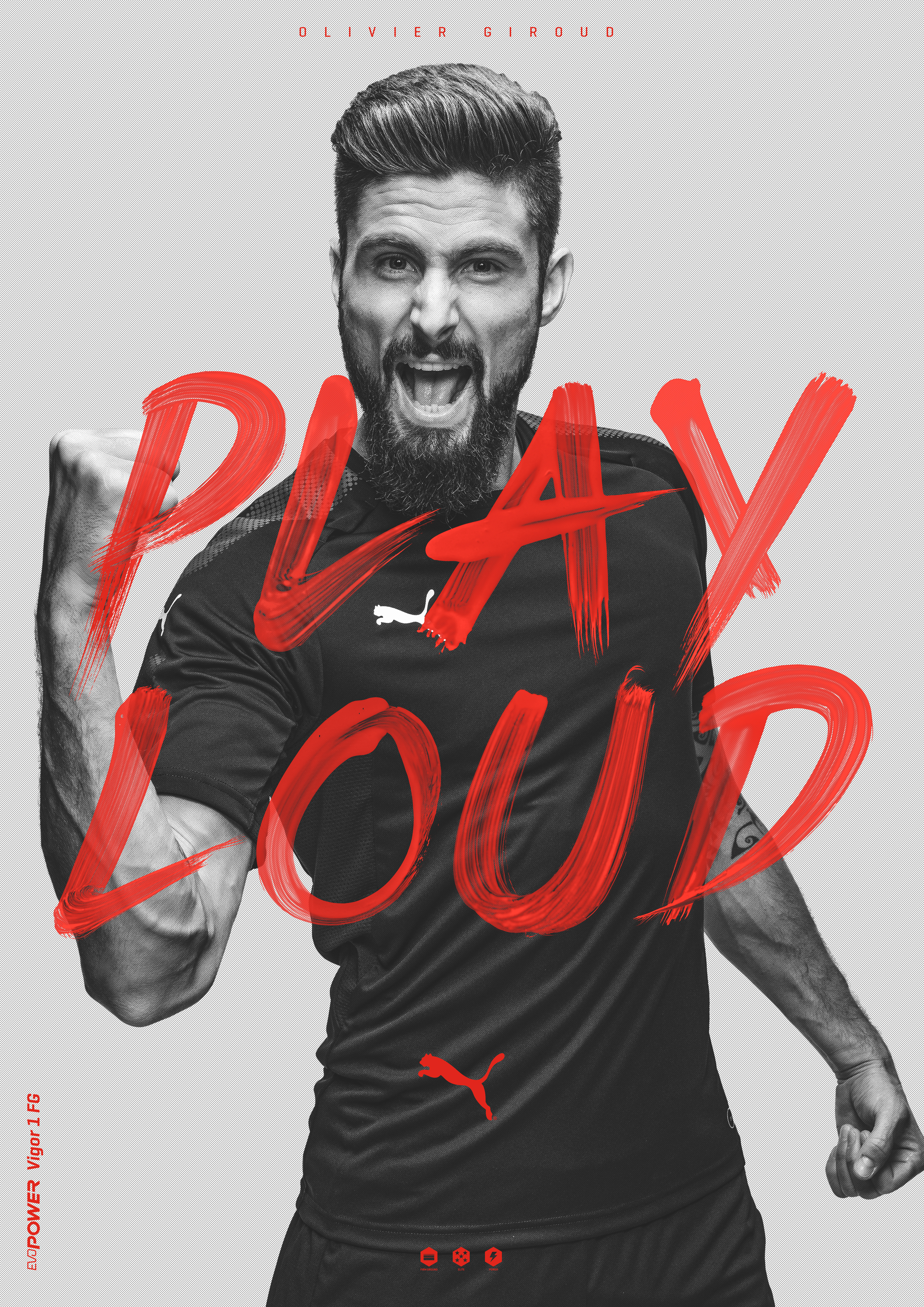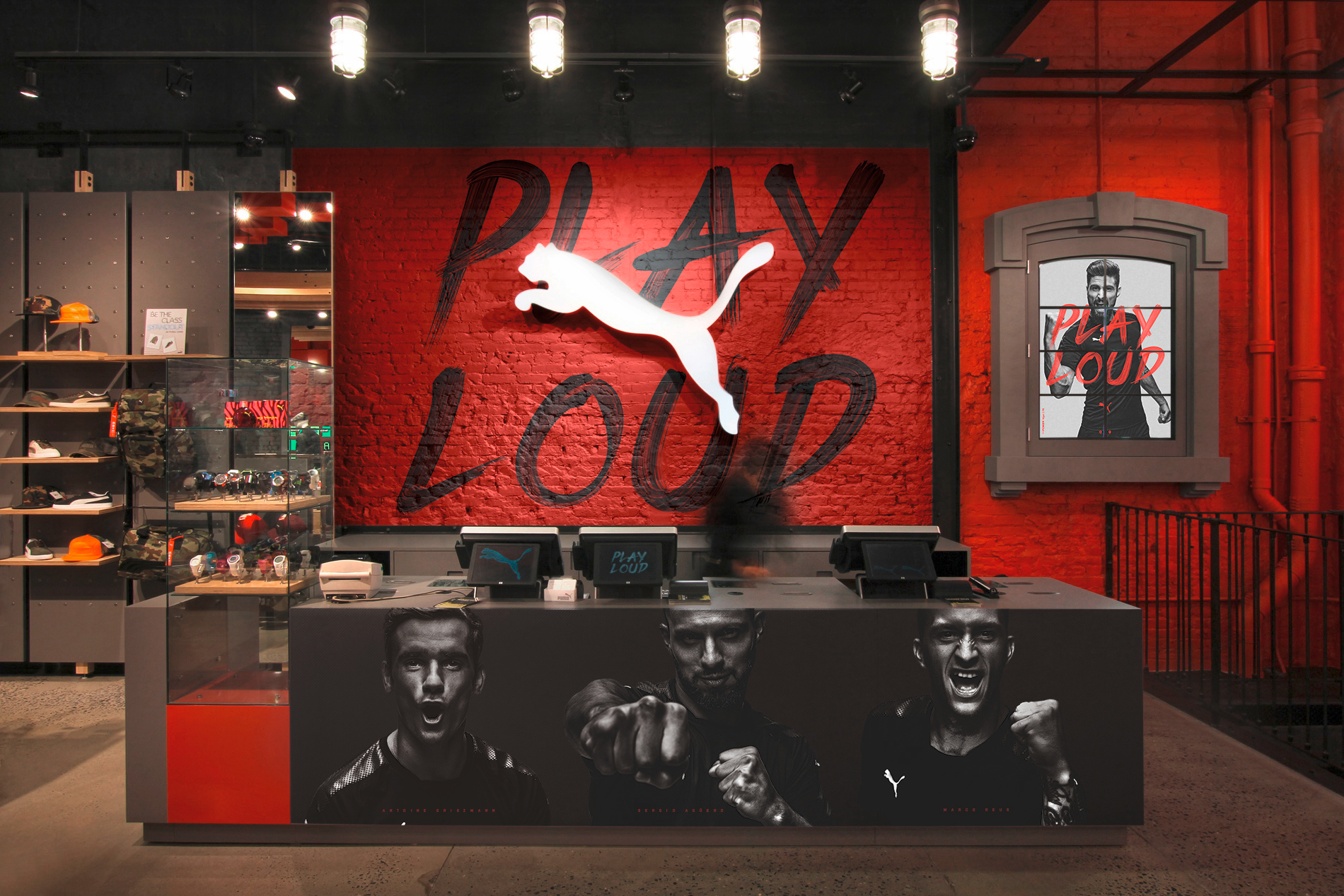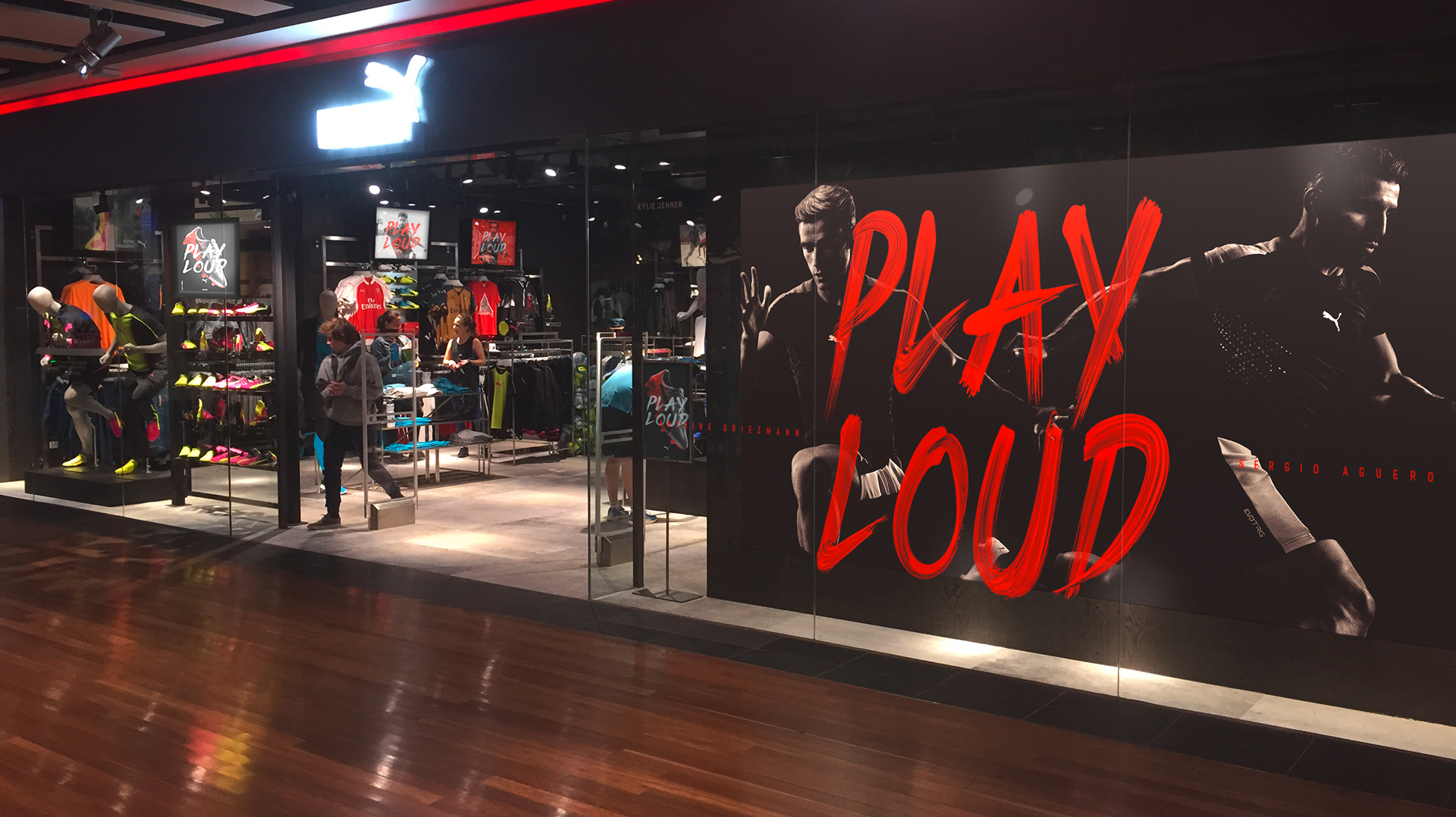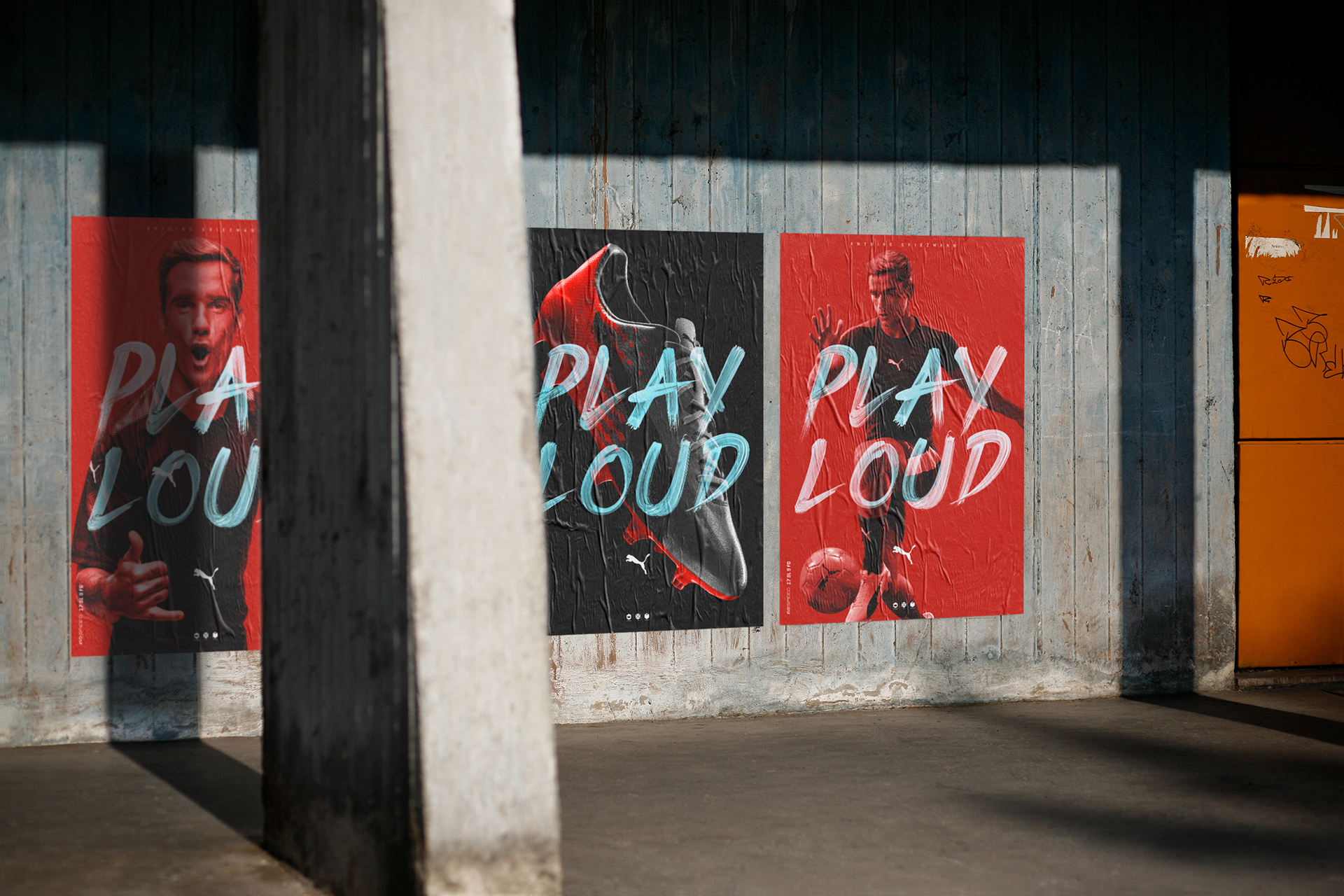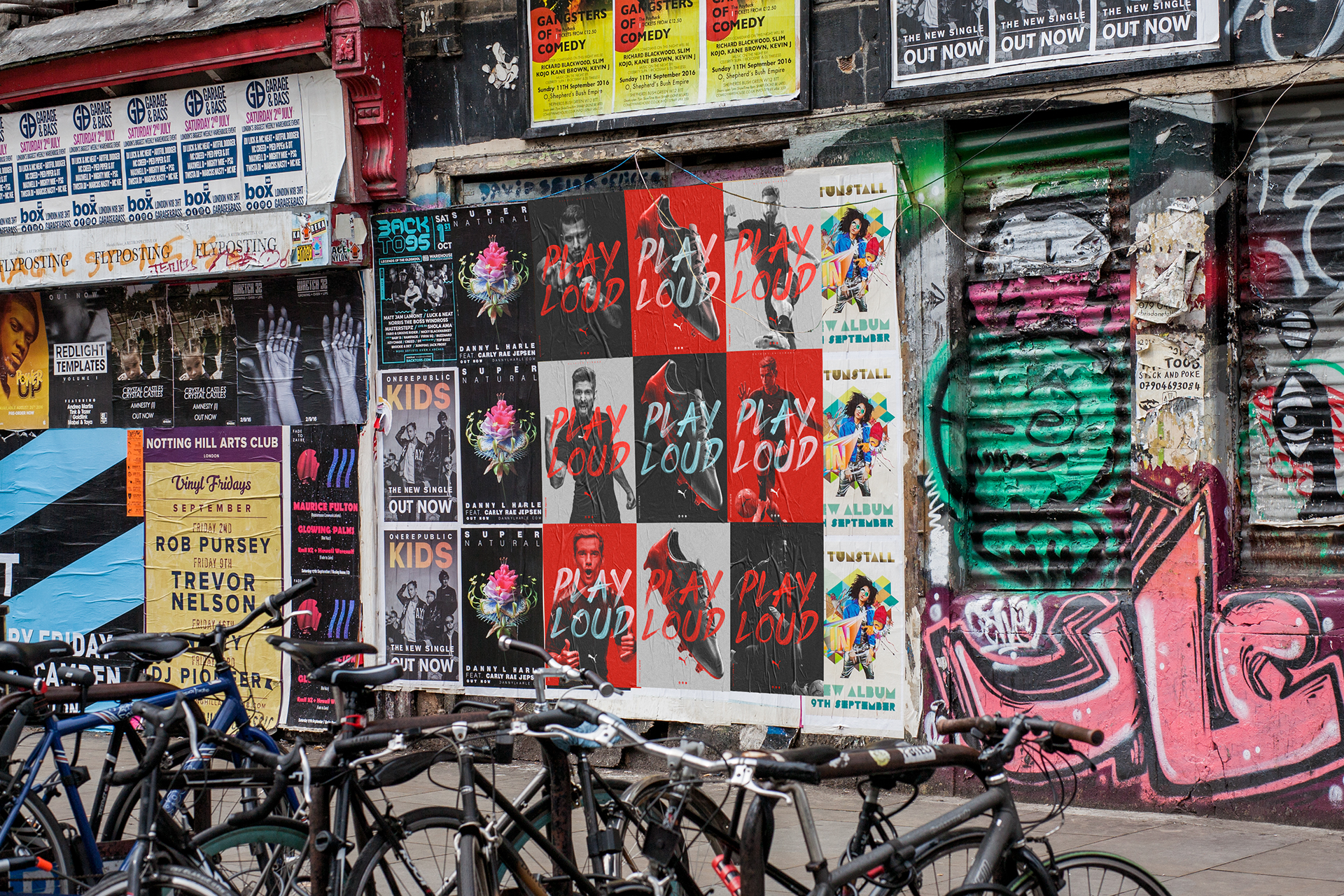September 12, 2017
Alone Together: Aristotle Roufanis’ Photographic Portrayal of Global Cities
Alone Together: Aristotle Roufanis’ Photographic Portrayal of Global Cities
Alone Together: A deep look at the loneliness of global cities as it appears during the blue hour
If you live or have ever lived in a large, global metropole you can certainly relate to London-based photographer Aristotle Roufanis’ project ‘Alone Together’ which takes a unique approach in capturing the loneliness that festers in a global city. An ongoing photographic project, Roufanis takes this phenomenon of social alienation in urban centres as a starting point, and adds a positive, optimistic twist to it. Photos are captured in a way that only tiny, individual apartment lights are visible in some of our favorite cities in the world including London, Paris, Miami and Athens.
“Hardly recognisable in the dark, some of the world’s most famous metropoles are transformed into sprawling canvases of anonymity, where countless people have decided to make their home but hardly connect to each other.”
“The bigger the city, the lonelier we feel,” comments Aristotle Roufanis, who recently moved to London from another bustling urban centre, namely his hometown of Athens, Greece. “In a big city, we are very efficient in covering all our consumerist needs, but we forget our need for companionship. It is important for people to understand that although lonely, they are not alone. Individuality does not equal to alienation.” Roufanis does an amazing job of drawing a parallel between the singular lights in an apartment window to an individual stuck in a dark void of a detached world. Photos are taken in between the hours of dusk and dawn, shifting the spotlight from public to private which enables the eye to focus on only the singular lights in a building rather than iconic landmarks like the Eiffel Tower.
Roufanis uses a technique of super high-resolution photography complemented by digital editing that can take up to ONE MONTH for each photo. Presented in exhibition context, images are showcased in extremely high-resolution prints to highlight as much detail as possible to the naked eye. The resolution of the images is so high that you can delight your inner voyeur by spying on individuals standing in the windows contemplating the city outside or doing everyday things in their home.









ABOUT ARISTOTLE ROUFANIS
Aristotle Roufanis is a London-based art photographer whose work focuses on patterns, textures and human interactions defined by the condition of urban architecture. An active photographer since his early 20’s, Aristotle Roufanis is a self-taught artist, who has mastered his medium through several personal photographic projects. In 2016 he has participated in Scope Art Fair – Miami Beach and with a solo show in Fotofever – Paris; in the same year, his work exhibited at the Summer Exhibition of the Royal Academy of Arts sold out before the show’s public opening. In 2017 he exhibited at Scope in Basel during Art Basel 2017 and he is scheduled to exhibit at the prestigious Zona Maco in Mexico City as well as other art events throughout the world. Aristotle Roufanis’ work is part of esteemed private collections in London, Paris, Milan, Miami, New York and Mexico City.
Roufanis is a civil engineering graduate and has always been fascinated by architecture, and particularly the patterns and sheer scale of large cities. Interested in the many contrasts and the amount of information one can collect through reading an urban landscape, the artist has often turned his lens to urban architecture in the past. Alone Together combines several themes that have appeared in Aristotle Roufanis’s work so far, but merges them in a very skillful and refined way.
ibby
Sep 12, 2017
Source: Abduzeedo Photography
September 12, 2017
Minimalist Editorial Design for VÆRK Magazine
Minimalist Editorial Design for VÆRK Magazine
How many people read paper magazine nowadays? I started this post with a question because despite the fact that magazines are becoming obsolete in their paper form, their contribution to design is hard to put on words. Editorial design for me is one of the most inspiring fields of design. It’s the pinnacle of design if you will. You have a limit amount of space on the page, you might have big and small images, you have text and you need to call readers attention for the content. It’s always a great exercise to try to design a magazine. Stine Erlang Sloth shared a cool project on her Behance profile where she redesigned VÆRK Magazine for a school project. Below you can see the results.
The cool thing about this project for me is the typography, use of white space but also the bold use of blue for the cover. It is a departure from the normal white or full image style. I love how bold it looks, especially with the embossed text but still with a classic editorial design style.
Three of the leading lifestyle magazines in Denmark and SMK has gone together and made a new art magazine – VÆRK, which will open new doors to art.
Editorial Design

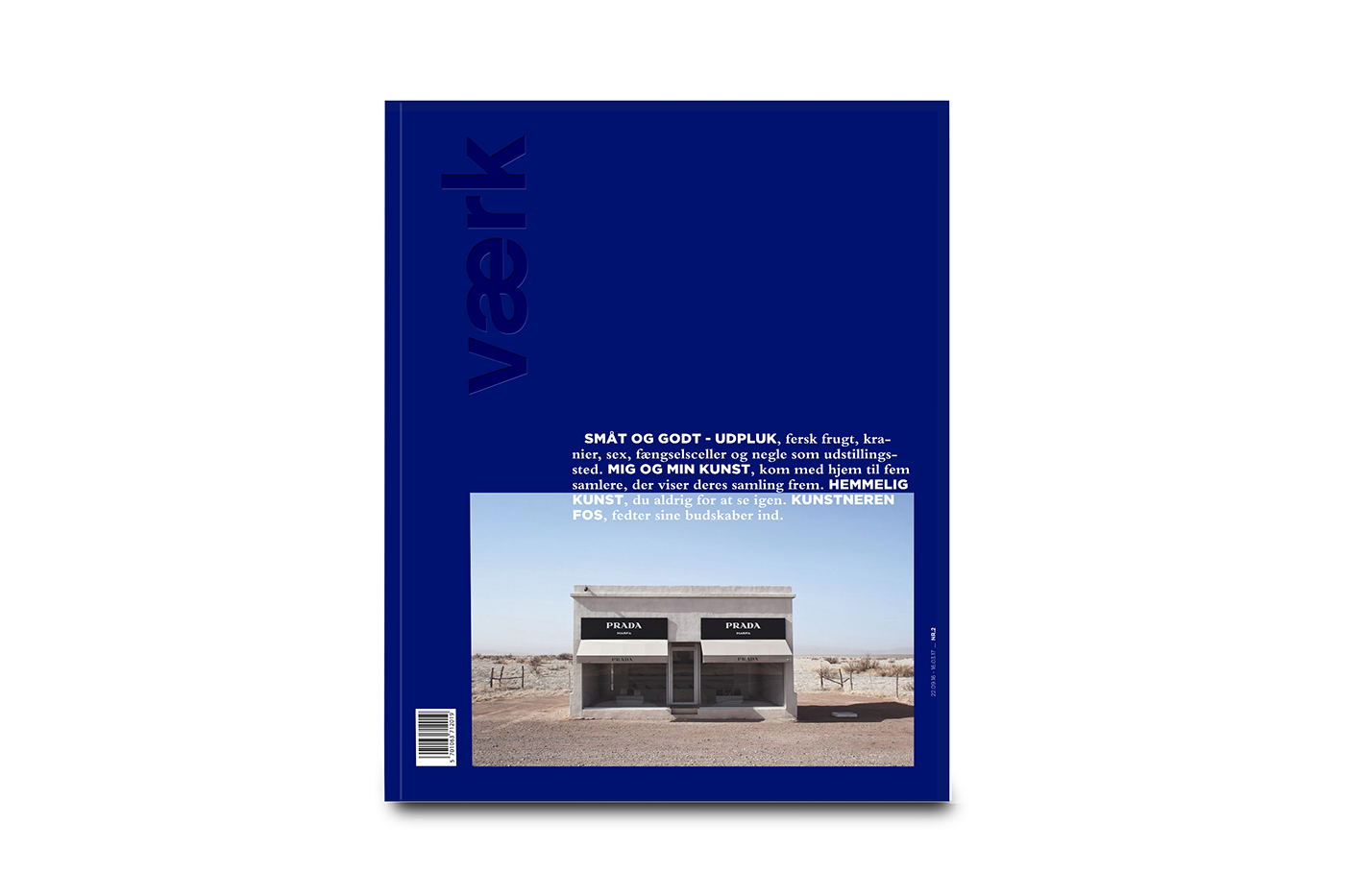


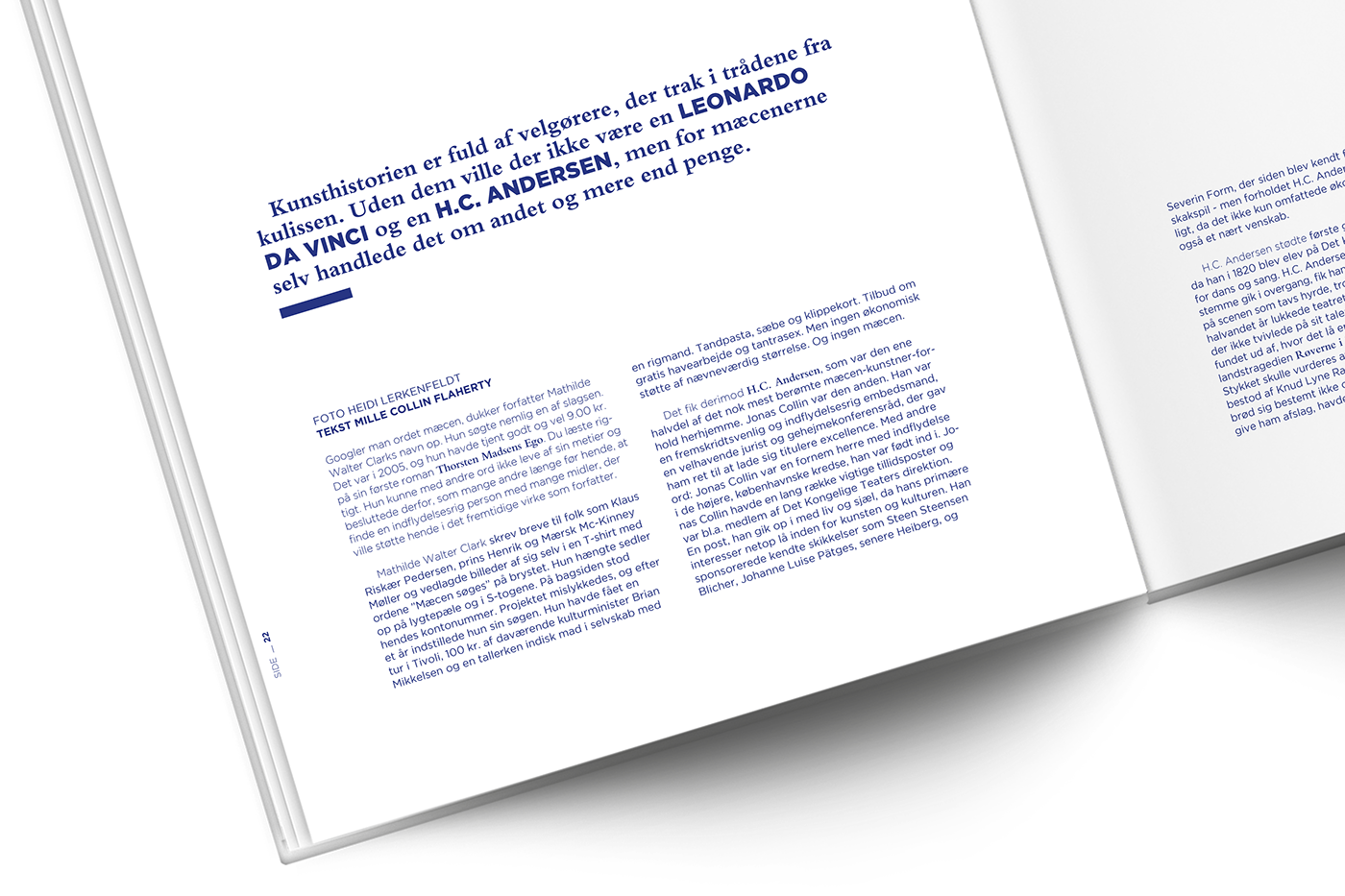
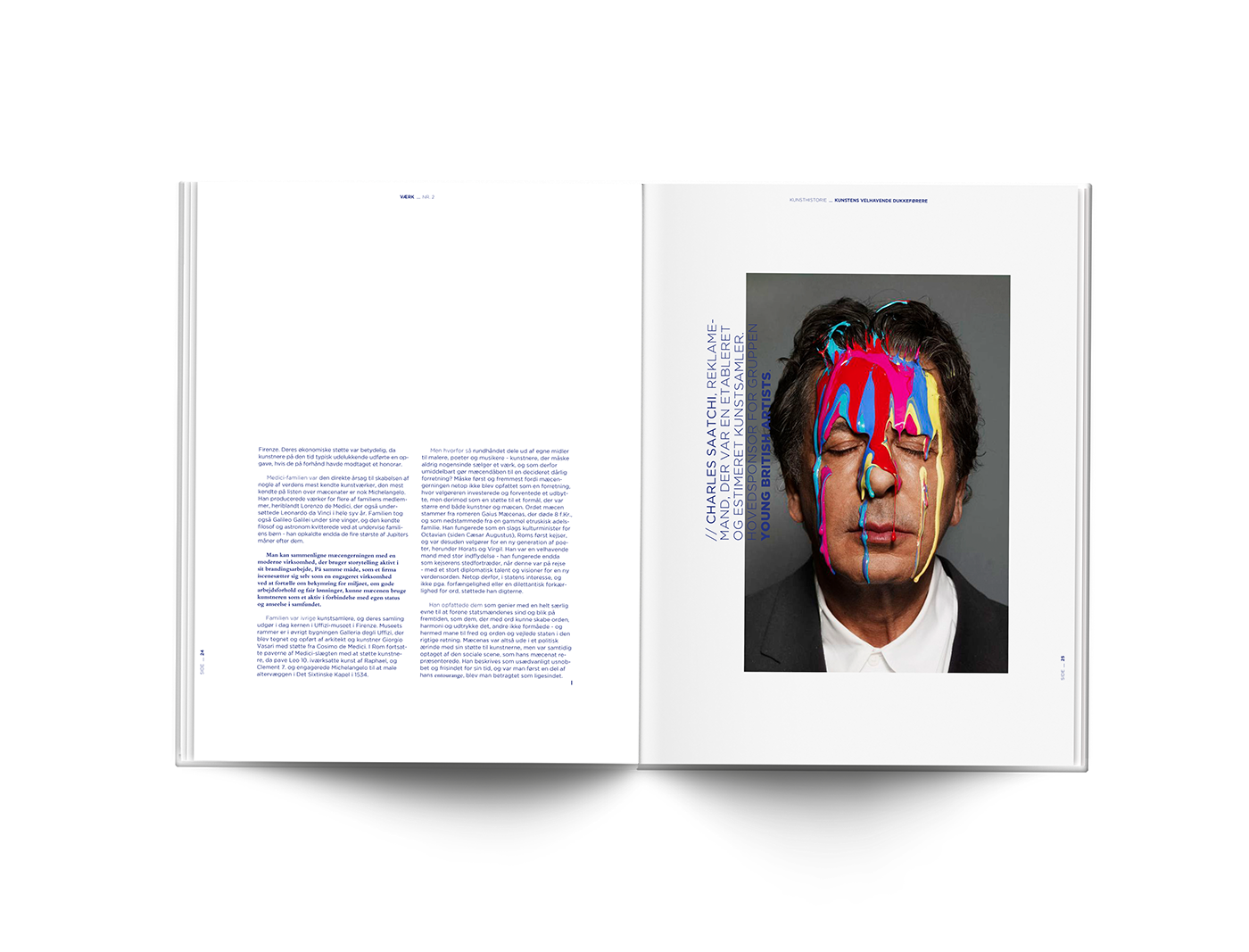


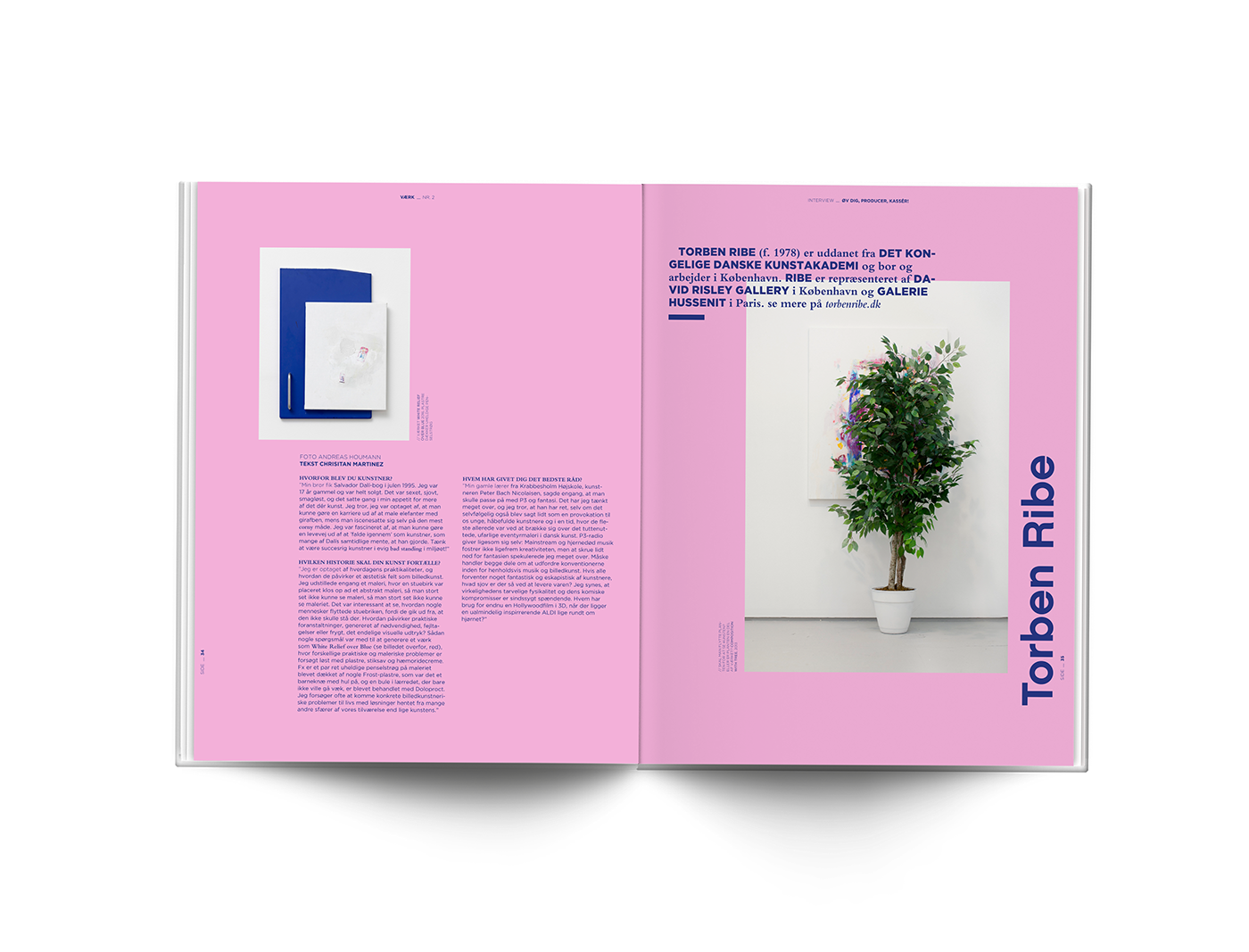


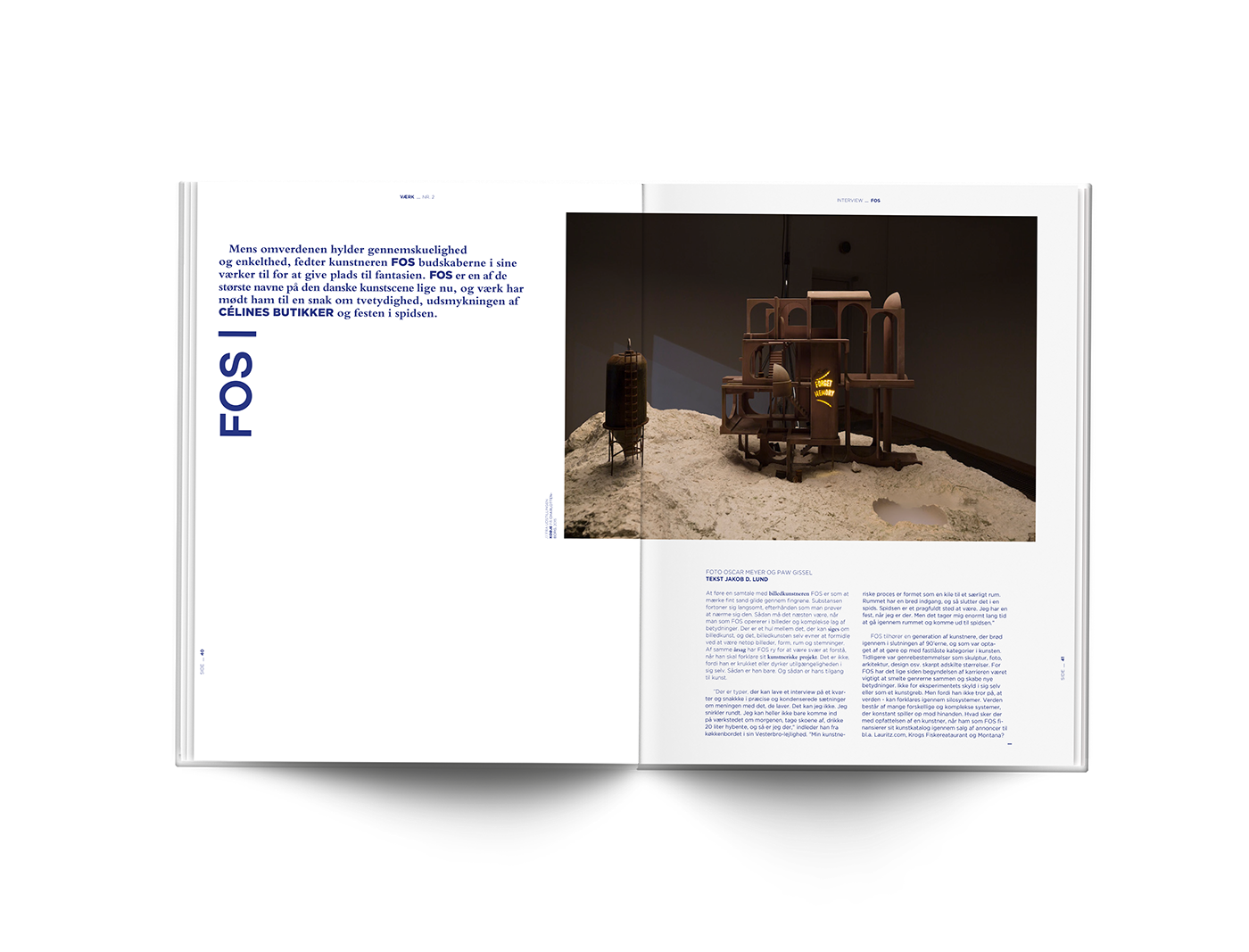
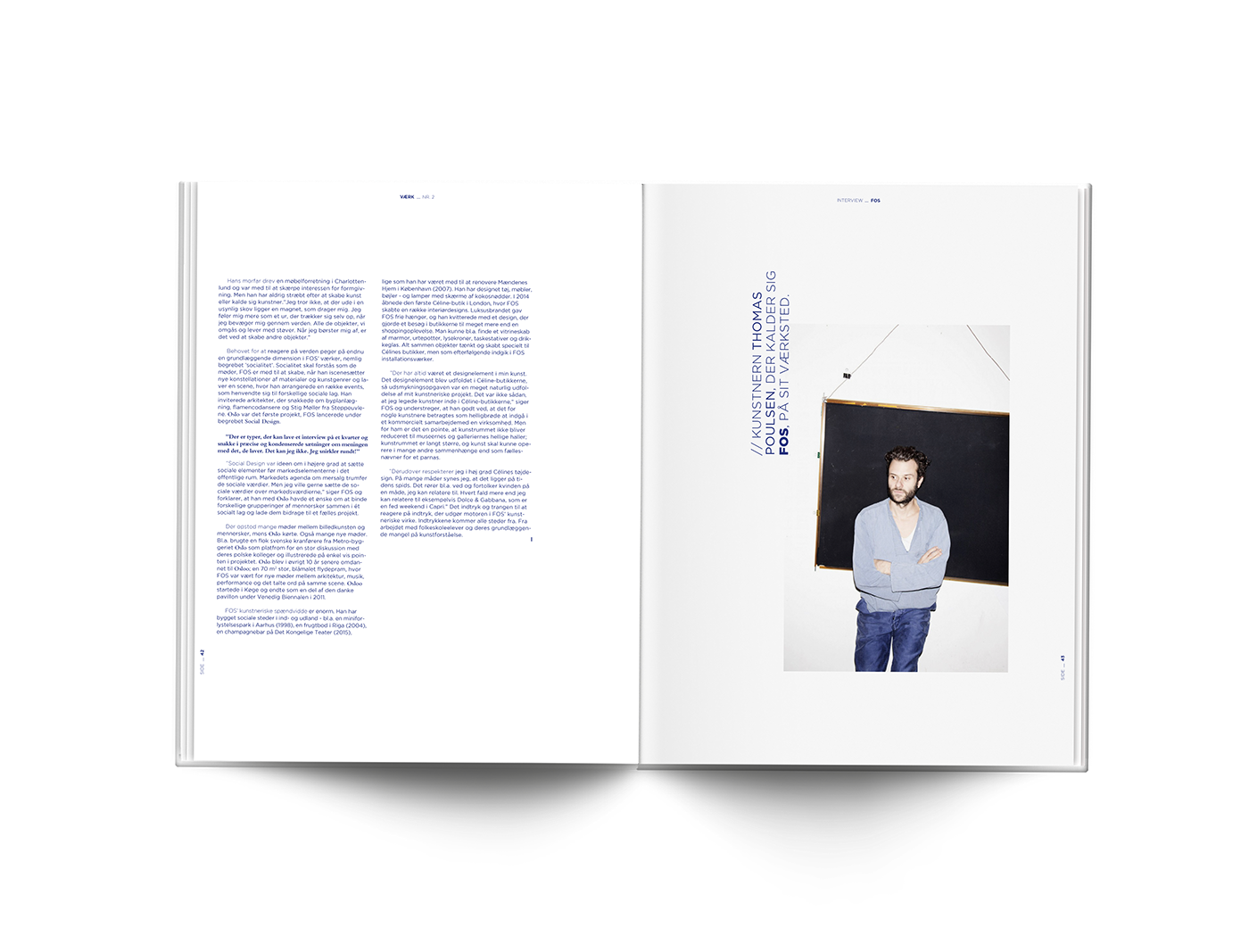




Via Behance. For more information check out:
abduzeedo
Sep 12, 2017
Source: Abduzeedo Editorial Design
September 12, 2017
Art Direction & Photography: Puma Play Loud
Art Direction & Photography: Puma Play Loud
The kind of project I do enjoy featuring on ABDZ, it’s a combination of art direction and photography. We are taking a closer look at the work of Boston-based art director Jeremy Haunschild. The approach is simple but kindly efficient especially when it’s mixed with Interior Design. Commissioned by Puma, let’s enjoy also the Behind-the-Scenes process for this project.
Jeremy Haunschild is a art director based in Boston, MA. His work is focused in art direction, photography and advertising, check out his Behance for more works.
For PUMA’s 2017 Global teamsport initiative, I designed the visual system and concept that would carry throughout the extensive international diaspora of executions required to support the teamsport business category. I art directed the photography of the key athletes that appeared in the campaign as well as the overall layout and design of the typography and all aspects of post-production.
Project Gallery
More Links
- Learn more about Jeremy Haunschild at jeremyhaunschild.com
- Follow Jeremy on Behance
AoiroStudio
Sep 12, 2017
Source: Abduzeedo Photography
September 10, 2017
‘I, Tonya’ Director Reveals Tonya Harding’s Reaction to the Breakout Biopic — TIFF
There’s no buzzier title at the Toronto International Film Festival than Craig Gillespie’s alternately hilarious and deeply empathetic Tonya Harding biopic “I, Tonya.” Margot Robbie stars in the eponymous role as the embattled (and, as the film vividly shows, misunderstood) ice skating star who became the subject of so much derision, and the film attempts to present a full portrait of her before and after the insane events leading to the 1994 Winter Olympics (cue Nancy Kerrigan screaming “Why? Why?!”).
Much of that portrait is owed squarely to Harding herself who, along with ex-husband Jeff Gillooly (played in the film by Sebastian Stan, a meaty role for the rising star), participated in hours of interviews with screenwriter Steven Rogers. What emerges is a funny and flinty look at the embattled ice princess that doesn’t skimp on the gory details, including Harding’s abuse at the hands of both Gillooly and her own mother (played by Allison Janney). But it’s also a compelling look inside one of America’s first stories of the 24-hour news cycle, one that has been writ large (and often incorrectly) for over two decades.
“[Steven] did a six-hour interview with Tonya,” Gillespie told IndieWire at the festival. “He watched the documentary [‘The Price of Gold’], he tracked her down, he went up there, they met. This is her interview, which is why these stories feel so spontaneous and personal and bizarre.”
Harding’s voice and point of view is prevalent throughout the film, which includes multiple documentary-style talking head “interviews,” also filmed by Gillespie. He and Robbie met with Harding for just a couple of hours during production, while only Stan spent extra time with Gillooly, whose current-day portrayal makes clear that all he wants to do is put it behind him.
Elsewhere, Gillespie and stars Janney and Paul Walter Hauser (who plays Gillooly’s moronic pal, Shawn Eckhardt) reenact existing interviews featuring the real-life inspirations for their roles (some of which play during the end credits).
“I loved these contradictory interviews, I love that we’re giving the audience a chance to participate,” Gillespie said. “It’s almost, in that sense, like a documentary. You get to see these people, and you get to try and decide if they’re lying. What do I believe? You get to make your own choices.”
So, has Harding seen the film? Yes, though she was not on hand for the Toronto premiere. Gillespie said she saw it the week before its debut, and he still seems a bit jittery about the experience.
“I was nervous to show it to her,” he said.”I hoped that she would like it, but you never know. For somebody to look at themselves objectively, it’s so hard, and she’s been bombarded by this for so long… It’s so much Tonya’s story, that was my primary focus.”
He added, “On the one side, I feel like we’ve done a very honest portrayal. When I set out to make the film, she’s been such a villain and a punchline in our society for so long, and I loved that challenge to just change that perspective. I really felt like it was there in Steven’s script that, by the end of the movie, we should emphasize with her. I know it’s a tall order with such a huge public persona that we have, but I really felt it was possible with Margo’s performance, with this script.”
Final result? “I heard she was actually happy with it,” Gillespie said with a grin.
“I, Tonya” premiered at the 2017 Toronto International Film Festival. It is currently seeking U.S. distribution.
Source: IndieWire film
September 10, 2017
‘Fifty Shades Freed’ Teaser: The Honeymoon Doesn’t Go as Planned — Watch
As if in response to “It” making $117 million at the box office this weekend, the first teaser trailer for a rather different blockbuster has just been released: “Fifty Shades Freed.” The third entry in the soon-to-be billion-dollar franchise finds its stars ready to embark on their honeymoon, which probably won’t go as planned — if it did, why would they need to make a movie about it? Watch below.
“I solemnly vow to love you faithfully, forsaking all others. I promise to trust and respect you and to keep you safe for as long as we both shall live,” narrates Christian Grey (Jamie Dornan) as the teaser opens. From there, things get less traditionally romantic — Anastasia (Dakota Johnson) is pursued by would-be kidnappers and the couple’s famed S&M exploits are briefly teased.
The full trailer will be unveiled in November, because that’s a thing that happens now. James Foley directed “Fifty Shades Freed,” which arrives in theaters on Valentine’s Day 2018.
Source: IndieWire film
September 10, 2017
‘It’: Why a Creepy Clown Looks Like a Savior for the 2017 Box Office
After the drought of summer box office, “It” is a monsoon. It doubled already-high advance predictions, but most of all, one well-received horror film gives hope that a bad year could recover.
Records, even adjusted ones, get broken sometime. But to this degree is almost unheard of. Previously, the biggest September opening in adjusted grosses was “Rush Hour” in 1998 ($62 million). The $123 million estimate essentially doubled that number — and likely would have been about around $7 million-$8 million more, had Florida theaters not been closed.
This above-and-beyond performance happened on the traditionally comatose weekend after Labor Day. Last year, Warners took a similar risk in releasing Clint Eastwood’s “Sully,” a rare “A” title for the post-Labor Day weekend, and set a record (adjusted) at $35 million. This is 250 percent bigger.

“It”
Its success might be isolated. The factors in its favor include the appeal of a creepy-clown story; a lack of recent movies that appeal to mainstream moviegoers (particularly younger and minority audiences, who represent a much larger share of the ticket buying population); and audiences who loved the film as much as critics.
The result is a total gross nearly $60 million better than a year ago. The full week’s uptick could be close to $90 million. If we’re to make up for this weak summer, each week needs to best 2016 by a $30 million average. “It” will help reduce that shortfall significantly.
Screenshot/Open Road Films
Still, it’s hard to overplay its performance. The total gross of everything else playing this weekend was only $40 million. Had this done $60 million as expected, the weekend would have been no better than last year. “Home Again” (Open Road), a romantic comedy with Reese Witherspoon that opened wide, managed only $9 million. No other film grossed even $5 million, with the bulk of them holdovers.
This is the second-biggest opening ever for a film anticipated as a standalone enterprise. Among franchise starters (excluding Marvel and D.C. Universe films that were offshoots of established worlds), it is third best. “Beauty and the Beast” earlier this year was bigger, as was the first “Hunger Games” film. But that’s the company it is in.
The Top Ten
1. It (Warner Bros.) NEW – Cinemascore: B+; Metacritic: 71
$117,150,000 in 4,103 theaters; PTA (per theater average): $28,552; Cumulative: $117,150,000
2. Home Again (Open Road) NEW – Cinemascore: B; Metacritic: 43
$9,028,000 in 2,940 theaters; PTA: $; Cumulative: $9,028,000
3. Hitman’s Bodyguard (Lionsgate) Week 4; Last weekend #1
$4,850,000 (-54%) in 3,332 theaters (-48); PTA: $1,460; Cumulative: $64,897,000
4. Annabelle: Creation (Warner Bros.) Week 5; Last weekend #2
$4,000,000 (-47%) in 3,033 theaters (-355); PTA: $1,332; Cumulative: $96,267,000
5. Wind River (Weinstein) Week 6; Last weekend #3
$3,210,000 (-48%) in 2,890 theaters (+288); PTA: $1,111; Cumulative: $25,002,000
6. Leap! (Weinstein) Week; Last weekend #4
$2,500,000 (-48%) in 2,691 theaters (-14); PTA: $929; Cumulative: $15,875,000
7. Spider-Man: Homecoming (Sony) Week; Last weekend #7
$2,015,000 (-45%) in 1,657 theaters (-379); PTA: $1,216; Cumulative: $327,703,000
8. Dunkirk (Warner Bros.) Week 8; Last weekend #6
$1,950,000 (-55%) in 2,110 theaters (-642); PTA: $924; Cumulative: $183,210,000
9. Logan Lucky (Bleecker Street) Week; Last weekend #5
$1,826,000 (59%) in 2,167 theaters (-808); PTA: $843; Cumulative: $25,229,000
10. The Emoji Movie (Sony) Week; Last weekend #9
$1,060,000 (-57%) in 1,450 theaters (-658); PTA: $731; Cumulative: $82,517,000
Source: IndieWire film
September 10, 2017
‘Star Wars Episode IX’: Stephen Colbert Thinks Werner Herzog Should Replace Colin Trevorrow — Watch
Now that Colin Trevorrow is out as “Star Wars Episode IX” director, everyone has an opinion on who should replace him. That includes IndieWire, of course — our picks include newly crowned Golden Lion winner Guillermo del Toro, wonder woman Patty Jenkins, and true detective Cary Fukunaga — as well as Stephen Colbert. Watch the full segment below.
The “Late Show” host discussed the “Book of Henry” helmer’s ouster on Friday night, joking that not all is well in the wretched hive of scum and villainy known as Hollywood. Among Colbert’s suggestions to replace Trevorrow? Quentin Tarantino, because we all know that the franchise far, far away is “missing ’70s music and extended conversations about cheeseburgers” — so get ready for “Episode IX: Everybody Shoots First.”
Also on the list: Nancy Meyers, whose “What Wookiees Want” serves to remind that “sometimes, the droids you were looking for were right in front of you the whole time.” Best of all is Werner Herzog, for whose “Episode IX” the “Late Show” team put together a fake trailer complete with the German auteur’s distinct narration. Who wouldn’t want to watch “Episode IX: Why Do We Need a Subtitle When 100 Years From Now Each of Us Will Be Dead Buried in the Cold, Dark Ground”?
Source: IndieWire film
September 10, 2017
George Clooney: The Key to Diversity Lies with Studio Executives, Not the Oscars
George Clooney has a message for anyone criticizing the Oscars for a lack of diversity: You’re looking in the wrong place. “It’s less about the Academy and more about the industry,” said the 56-year-old actor-director during an interview at the Toronto International Film Festival. “I think we need to get more interesting young minority filmmakers getting their films out. It was great to see ‘Moonlight’ do what it did. I’m happy to see that. We need more of those.”
As another awards season takes flight, there are fewer buzzy fall titles with people of color and women directors, which has already raised fears of another #OscarsSoWhite sequel. Clooney, however, thinks that the film industry needs to change its ways if Oscar voters want diverse options. He offered a recent example of a project he was offered a few weeks ago. “It’s like an action film, but similar to ‘The Dirty Dozen,’” he said. “I was reading it, and I was thinking, I’m not the right guy to do this part, but why aren’t you getting Idris Elba to play this? He’s a leading man. There’s no reason why this character can’t be black.”
Elba, whose last star vehicle was the poorly received sci-fi-western “The Dark Tower,” has a history of being under-appreciated in the film industry. In 2016, his lack of a supporting actor nomination for “Beasts of No Nation” was often cited as an example of one major performance overlooked by the Academy when it all the acting nominees were white. Most recently, rumors that Elba had been in talks to play James Bond were put to bed by Sony, which re-upped Daniel Craig’s contract.
“Clearly, the star system isn’t what it used to be, where you put a name out there and everybody comes to see the movie,” Clooney said. “So why isn’t Idris asked to play this guy? Why isn’t Idris in line for the next Bond? Where is the studio’s imagination?”
Despite his progressive philanthropic causes, most of Clooney’s work hasn’t led the charge for diversity. “Suburbicon” is his first big project to deal with racism. The movie, which Clooney and writing partner Grant Heslov spruced up from an old Coen brothers project, stars Matt Damon as a blue-collar man in an exaggerated ’50s suburban setting enmeshed in a crime gone wrong — but the movie’s central motif is the neighborhood impact of a black family who moves onto the same block.

Julianne Moore and Matt Damon, “Suburbicon”
Paramount Pictures
The family is heckled around the clock by Confederate flag-bearing white people, images that have particular resonance in the wake of the Charlottesville riots. Clooney started working on the movie during the 2016 election, but said he wasn’t surprised that more recent events echoes its themes.
“Of course, Charlottesville happens, because every few years Charlottesville happens again,” he said. “We keep forgetting that we haven’t excised that original sin completely. When I was growing up in Kentucky, the civil-rights movement had its big wave and segregation was exorcised from this country. We really felt like we were on this trajectory toward it all being finished. It wasn’t something you thought would be around. It’s a surprise that it’s still a part of our world.”
As a filmmaker, Clooney said it took years for him to tackle race because he had yet to find the right project. “A lot of people ask me why I haven’t done any movies about Darfur or South Sudan,” he said, recalling his advocacy in the region. “Well, I haven’t found the script that’s right to do it. My personal life and where I go — philanthropic things — have always been toward whatever is inclusive, not exclusive. That’s always been an important part of my life. It’s just hard to find those films.”
But Clooney added that he would rather see more minority filmmakers work their way into the industry, echoing the rise of Mexican filmmakers in Hollywood over a decade ago — the so-called “Three Amigos” of Alfonso Cuaron, Alejandro Gonzalez Iñarritu, and Guillermo del Toro, whose “The Shape of Water” just won the Golden Lion at the Venice International Film Festival.
“All these great Mexican filmmakers showed up, it was like, fuck, this is great filmmaking,” Clooney said. “That’s what I’d like to see… some really interesting young filmmakers out there. You want to feel something fresh and new constantly. You want people pushing the limits. There’s a way to make things much cheaper now so there are a lot of different voices out there.”
He also acknowledged the need for stronger female-centric projects. “I feel as if our industry has lost sight of what we could do well,” he said. “In the ‘30s, seven of the top 10 movie stars were women. Now, it’s really hard for women. There are a few — the Jennifer Lawrences of the world — but mostly, they’re having a tough time and we’re going, ‘Well, why? What’s happened?’ And women aren’t the minority, by the way.”
He placed the blame at studio executives’ feet. “The thing is, when a business is run by a certain group of people who can’t see putting a 45-year-old woman as a romantic lead, well, that’s a problem,” he said. “You need to be able to say, she’s still sexy.”
Needless to say, he’s not hopeful about the prospects of a diverse Oscar season in the wake of the “Moonlight” win. “I have a sense that now that’s happened, they’ll be like, well, we did it, and move on.”
“Suburbicon” opens October 27.
Source: IndieWire film
September 10, 2017
Instagram Artist Love: Mari Andrew
Instagram Artist Love: Mari Andrew
I’m sure all of you have a handful of creative folk you’ve discovered on Instagram that you’ve then shared with your inner circle because you love them so much. Mari Andrew happens to be at the top of my personal list and if you don’t know her already she’s definitely worth inserting into your feed.
Mari (rhymes with starry for the phonetically curious) has a pretty wonderful story about how she managed to garner nearly 600K followers on Instagram by documenting the rollercoaster of life through whimsical illustrations. Be it death, terrible dates, simple pleasures, and the dangers of creative vulnerability, Mari gives us all the confidence to stop saying and start doing. She’s always had a knack for writing but she’s just recently made her foray into illustrating upon going through a personally challenging time two years ago. Endeavoring to find a passion that could help her out of a rut she dabbled with learning the guitar, salsa dancing, surfing and cooking but drawing is the only one that managed to stick and bring her the joy she was missing. Mari made a personal pact to create one drawing a day for one year and post her work to Instagram. It’s the best tipping point story anyone could wish for in that through simple word of mouth she’s caught the attention of nearly 1.2MM eyeballs.
Just recently, Mari took a trip to Spain with the intention of working on her memoir but was stopped short with a sudden health scare in the diagnosis of Guillain-Barré syndrome, a rare immune disorder leaving her temporarily paralyzed. Mari’s illustrations have shifted a bit from artfully portraying the light and dark of grief and breakups to now shedding light on the challenges a health issue presents on the mind and body. We thank Mari for the amazing inspiration she serves to anyone going through whatever life throws at us and just how resilient the mind can be over the body.
I value optimism, resilience, vulnerability, and joie de vivre. I do not value “having chill.” I’m originally from Seattle, my favorite city is Rio de Janeiro, and I identify strongly with zebras. They always look like they’re doing their own thing and having a great time.
Instagram Artist
ibby
Sep 10, 2017
Source: Abduzeedo Illustration
September 10, 2017
3 Different Types of LUTs That Filmmakers Use (and How to Use Them)
Find out how to use LUTs to make your images more dynamic.
LUTs are an essential tool for any filmmaker. They can make your images more stylish, rich, and dynamic while making the process of color grading a whole lot easier to navigate. This aesthetic purpose is typically what a lot of new filmmakers think about when they think about LUTs, but these color tools can actually do a lot more than that. In this video, Ted Sim from Aputure lays out the different kinds of LUTs filmmakers use as well how they use them on and off set.
Ted mentions three different types of LUTs in the video and each one serves a different but very important purpose at different points in production.
Source: NoFilmSchool


